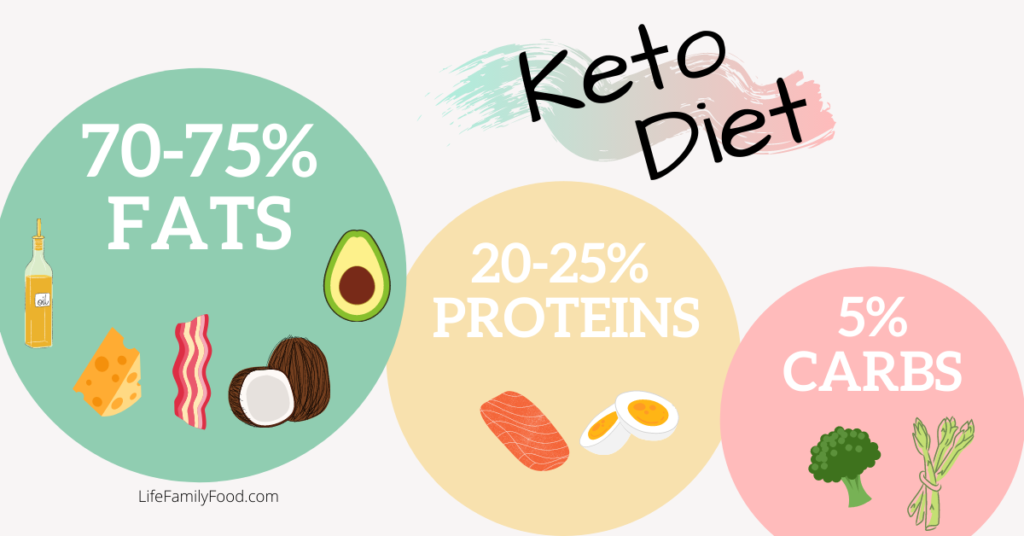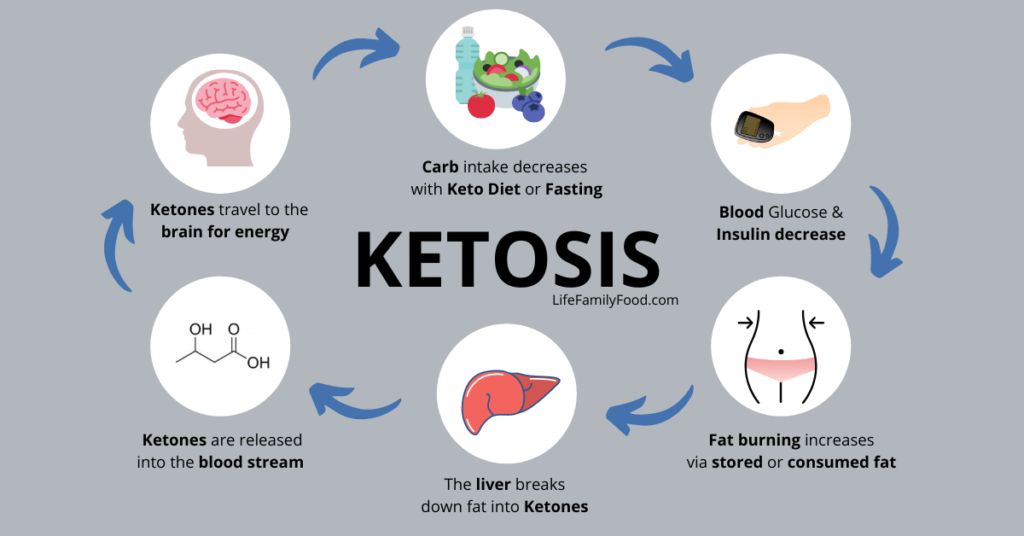This post may contain affiliate links and we may earn compensation when you click on the links at no additional cost to you.
The Ketogenic diet, also known as the Keto diet, is a high fat, moderate protein, very low-carb diet. When done right, can turn your body into a fat-burning machine. The keto diet has many potential benefits such as improved health and weight loss. But let’s be honest, weight loss is the main reason a lot of us are here today looking for articles on the keto diet! I know for me; weight loss was the main reason I started on this keto journey. But with any new diet there are also some initial side effects like the “keto flu” that you could experience; which we’ll get into later in a separate article.

The keto diet is similar to other strict low-carb diets like the Atkins diet, Ketovore, Carnivore, Low-Carb Paleo, low-carb Mediterranean just to name a few. Some people may simply choose to say they follow a low-carb diet and to be honest there are days that approach may be the simplest way to go. Having to defend how you eat or why you are eating low-carb keto can be exhausting; especially when you are defending this way of eating (woe) to those that don’t believe carbohydrates are a contributing factor to the growing numbers of obesity. In the end you need to determine what works for you!
Typically, our bodies use glucose as its primary source of energy. The carbohydrates we consume are broken down into glucose, which is the preferred and easiest source of energy used by our bodies. The excess carbs that our bodies do not use, are later converted and stored as fat in our adipose tissue. That would be your love handles, belly fat, hips, butt and thigh areas. Yep, that’s the result of all the extra carbohydrates we’ve eaten, which our bodies didn’t need and are holding onto in case of a future famine. Nice, right? So, what can we do to burn all that excess fat?
Enter the low-carb keto diet. By lowering the number of carbs consumed, the body will find an alternative fuel source. It’s not too late to change what or how you eat.
When glucose is not available, your body will turn to fat as its primary fuel source. Who doesn’t want that? I know I do and can confidently say, “Please use my fat stores as energy and help me lose weight in the process.” But how can we achieve that and help our body go from glucose driven to a ketone/fat burning machine? The short answer is, by lowering the number of carbs consumed. Our bodies are fascinating machine and will transitions into a state known as ketosis. Ketosis is a natural process where your body uses fat and ketones as its main fuel source. During this state our bodies break down fat in the liver to produce ketones. Hence the name ketosis.

Now ketosis is not to be confused with ketoacidosis; which mainly occurs in people with type 1 diabetes if they do not take insulin or have poorly controlled diabetes. In diabetic ketoacidosis, both blood sugar and ketones rise to dangerously high levels. In ketoacidosis, ketone levels are usually around 10 mmol/L or higher. These high levels upset the acid-base balance and can be fatal if not corrected.
Nutritional ketosis levels, which is achieve by following a healthy low-carb keto diet starts around 0.5 mmol/L and goes up to 5 mmol/L. Ketones can be monitored by using urine strips, breath meters or blood meters such as Keto Mojo (which is what I personally use).
The end goal of the keto diet is to get into a nutritional state of ketosis. This isn’t done by starvation due to calorie restriction, but by starving our bodies of carbohydrates. Our bodies are fascinating machines and very adaptive to what we put into them. When you overload it with fats and take away the carbohydrates, it will become the fat burning machine it was meant to be.
**Disclaimer**
This website offers inspirational insight on life, family, and nutritional food and is designed for educational purpose only. This website does not promise any specific results, as each individual responds differently to lifestyle changes, both physically and mentally. The author of this article is a registered nurse and not a medical practitioner. You should not rely on this information as a substitute for, nor does it replace, professional medical advice, or diagnostic treatment.
